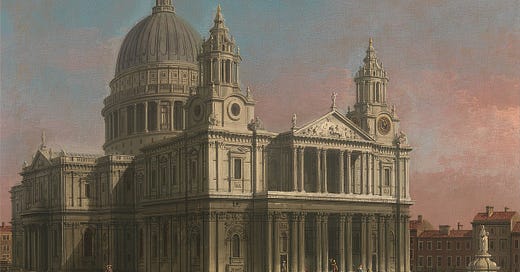Hi and welcome to your weekend newsletter…
This edition’s a guest post from Tabish Khan, and is adapted from an article originally published on Londonist: Urban Palette — our sister newsletter, covering London’s massive, and massively varied, visual arts scene. Subscribe to Londonist: Urban Palette for weekly reviews, interviews, gallery news, slices of London’s art history and more.
In this newsletter Tab looks at the path that took Italian artist Canaletto from painting Venetian canals to London landmarks.
The Wallace Collection has 15, The National Gallery has 17 and there are works in the collections of V&A, Museum of London, The Courtauld, National Maritime Museum in Greenwich, Sir John Soane’s Museum and Dulwich Picture Gallery. All told there are more than 130 works by Venetian painter Giovanni Antonio Canal, better known as Canaletto, in UK collections.
How did so many of his works come to end up in the UK, and in London in particular? It’s a story of rich folk — as sadly many stories around art trends are — and an enterprising partnership between a banker and an artist.
From the 17th through to the 19th century it became the fashion for wealthy young men in Britain to go on a ‘grand tour’ of Europe — think upperclass Georgian inter-railing — when they came of age, around 21 years old. It was customary to look for mementos of their travels and as there were no fridge magnets to be found1, there was a big market for young, wealthy Brits wanting to buy paintings of Venice to show all their friends back home — a 350 year precursor to flexing your holiday shots on social media.








